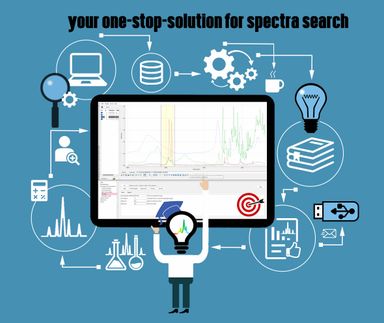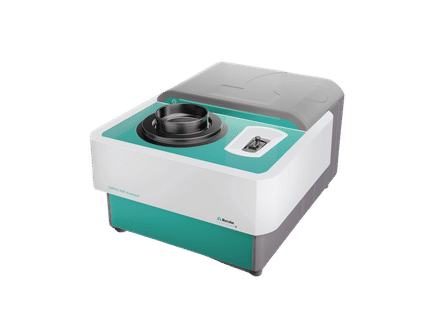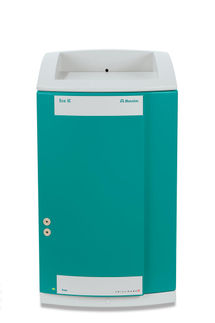|
|
|
|
| Enoxaparin
|
| Systematic (IUPAC) name
|
| 6-[5-acetylamino-4,6-dihydroxy-2- (sulfooxymethyl)tetrahydropyran-3-yl] oxy-3- [5-(6-carboxy-4,5-dihydroxy-3- sulfooxy-tetrahydropyran-2-yl)oxy-6-(hydroxymethyl)- 3-sulfoamino-4-sulfooxy-tetrahydropyran-2-yl] oxy-4-hydroxy-5-sulfooxy-tetrahydropyran-2- carboxylicacid
|
| Identifiers
|
| CAS number
| 9005-49-6
|
| ATC code
| B01AB05
|
| PubChem
| 772
|
| DrugBank
| APRD00068
|
| Chemical data
|
| Formula | (C26H40N2O36S5)n
|
| Mol. mass | 4500 daltons (average)
|
| Pharmacokinetic data
|
| Bioavailability | 92%
|
| Protein binding
| 80% bound-albumin
|
| Metabolism | primarily by liver by desulfation and/or depolymerization
|
| Half life | 4.5 hours
|
| Excretion | ?
|
| Therapeutic considerations
|
| Pregnancy cat.
|
B
|
| Legal status
|
|
| Routes
| Subcutaneous (SC) Injection and intervenous (IV) per package insert
|
Enoxaparin is a low molecular weight heparin manufactured by Sanofi-Aventis. It is marketed as Lovenox or Clexane. Enoxaparin injections are derived from the intestinal mucosa of pigs.
Enoxaparin is used to prevent and treat deep vein thrombosis or pulmonary embolism, and is given as a subcutaneous injection (by a health care provider or the patient). Its use is evolving in acute coronary syndromes (ACS).
Indications
In the UK, enoxaparin is approved for five indications:
- The prophylaxis of thromboembolism disorders of venous origin, in particular those which may be associated with orthopaedic surgery.
- The prophylaxis of venous thromboembolism (VTE) in medical patients bedridden due to acute illness.
- The treatment of venous thromboembolism disease (VTED) presenting with deep vein thrombosis (DVT), pulmonary embolism (PE) or both.
- The treatment of unstable angina (UA) and non-Q-wave myocardial infarction (NQMI), administered concurrently with aspirin.
- The prevention of thrombus formation in the extracorporeal circulation during haemodialysis.
In the United States, enoxaparin is FDA approved for eight indications:
- Prophylaxis of DVT in medically ill patient,
- Total hip & knee replacement,
- Extended hip-replacement,
- Abdominal surgery.
- Treatment of DVT with or with out PE inpatient and
- Treatment of DVT inpatient, with ACS, including STEMI.
Mechanism of action
Enoxaparin binds to and accelerates the activity of antithrombin III. By activating antithrombin III, enoxaparin preferentially potentiates the inhibition of coagulation factors Xa and IIa. The anticoagulant effect of enoxaparin can be directly correlated to its ability to inhibit factor Xa. Factor Xa catalyzes the conversion of prothrombin to thrombin, so enoxaparin’s inhibition of this process results in decreased thrombin and ultimately the prevention of fibrin clot formation.
Monitoring
- Enoxaparin does not affect the INR, PT or aPTT
- Anti-factor Xa levels can be measured, and are often used to monitor enoxaparin activity
Pregnancy
- Category B: enoxaprin is safe for use in the second trimester as it does not cross the placenta
Side effects
- Bleeding
- Thrombocytopenia, i.e. can be associated with heparin-induced thrombocytopenia
- Pain, bruising or irritation; hard, inflamed nodules or an itchy red rash at the injection site
- Symptoms similar to those of hayfever
- Abdominal/chest pain
- Headache
Reversal Agent
- Protamine, although not as effective at reversal as it is for heparin due to more activity at the Xa clotting factor (enoxaparin); as heparin has both Xa and IIa. Protamine sulfate will reverse enoxaparin by 66% per package insert.
Availability
100 mg/mL
- Prefilled Syringes: 30mg/0.3mL, 40mg/0.4mL
- Graduated Prefilled Syringes: 60mg/0.6mL, 80mg/0.8mL, 100mg/1mL
- Multiple Dose Vials: 300mg/3.0mL
150mg/mL
- Graduated Prefilled Syringes: 120mg/0.8mL, 150mg/1mL
| Antithrombotics (thrombolytics, anticoagulants and antiplatelet drugs) (B01) |
|---|
| Vitamin K antagonists | Acenocoumarol • Clorindione • Coumatetralyl • Dicumarol (Dicoumarol) • Diphenadione • Ethyl biscoumacetate • Phenprocoumon • Phenindione • Tioclomarol • Warfarin |
|---|
| Heparin group | Antithrombin III • Danaparoid • Heparin • Sulodexide • low molecular weight heparin (Bemiparin, Dalteparin, Enoxaparin, Nadroparin, Parnaparin, Reviparin, Tinzaparin) |
|---|
| Glycoprotein IIb/IIIa inhibitors | Abciximab • Eptifibatide • Tirofiban |
|---|
Other platelet
aggregation inhibitors | Acetylsalicylic acid/Aspirin • Aloxiprin • Ditazole • Carbasalate calcium • Cloricromen • Dipyridamole • Indobufen • Picotamide • Triflusal • ADP receptor inhibitors (Clopidogrel, Ticlopidine, Prasugrel) • prostaglandin analogue (Beraprost, Prostacyclin, Iloprost, Treprostinil) |
|---|
| Enzymes | plasminogen activators (Alteplase/Reteplase/Tenecteplase, Streptokinase, Urokinase/Saruplase, Anistreplase) • other serine endopeptidases (Ancrod, Drotrecogin alfa/Protein C, Fibrinolysin) • Brinase |
|---|
| Direct thrombin inhibitors | Argatroban • Bivalirudin • Dabigatran • Desirudin • Hirudin • Lepirudin • Melagatran • Ximelagatran |
|---|
| Other antithrombotics | Defibrotide • Dermatan sulfate • Fondaparinux • Rivaroxaban |
|---|
| Non-medicinal | Citrate • EDTA • Oxalate |
|---|
|







